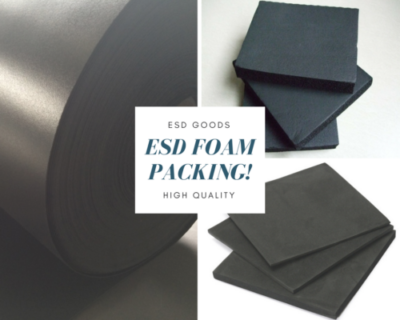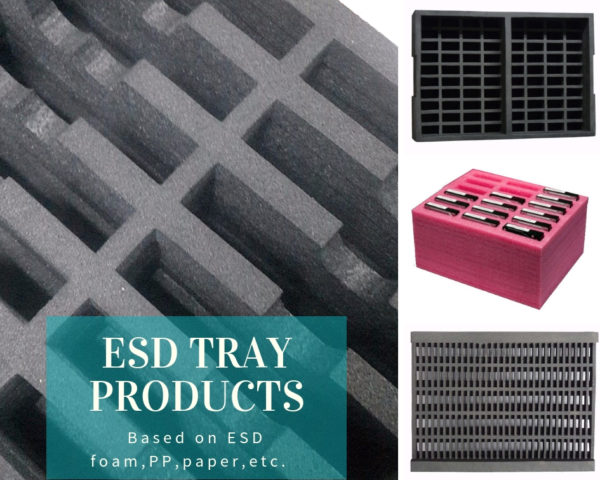Anti Static Foam Roll vs Conductive Polyethylene Foam Roll
Anti Static Foam Roll VS Conductive Foam Roll
In this article, we're gonna chat about the differences between anti-static foam roll and conductive foam roll, and take a look at the properties of anti static polyethylene foam. So let's dive in and find out what sets anti-static and conductive polyethylene foam rolls apart!
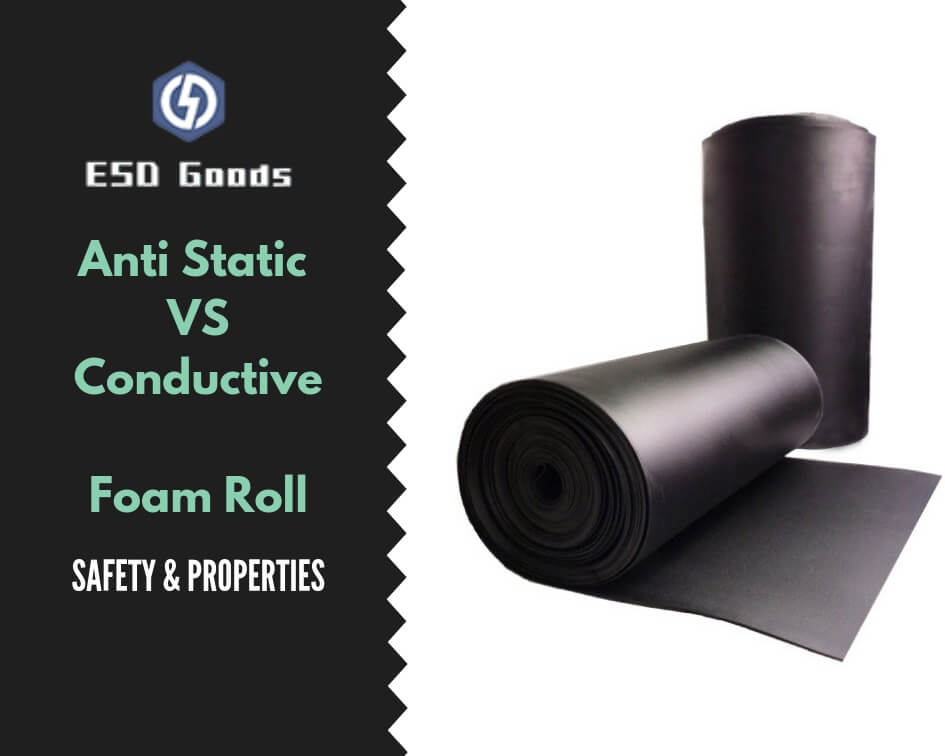
So you're probably wondering, what's the deal with anti-static ESD foam and conductive foam? Well, let me tell you, there are definitely some differences. But it's not like one is necessarily better than the other. It really just depends on what you need.
Both anti-static and conductive foam are made of polyethylene foam, they're black, safe, and have similar properties. There are some small differences though. If you want to learn more about polyethylene foam, check out my previous articles on ESD PE foam.
Anti Static Polyethylene Foam Roll (surface resistance 10e6-10e9)
Anti static polyethylene foam used for the fine electronic sensitive components packaging and protection. because the static release slowly by the anti static foam which protecting the loaded components.
Anti Static Polyethylene Foam Roll Properties
- Excellent electrical conductivity,Foam surface resistance:10e6-10e9
- Density 2.5-6.25 lb/ft
- Antistatic low charging – minimizing electrostatic charge generation
- No chemical corrosion: It has no corrosion to the components and packaging
- Buffer good performance,ideal for protecting the devices.
- Provides protection from physical shock during handling, packaging, shipping, and storage of ESD sensitive devices
- Ideal for longterm use
- Easy to adapt for custom uses by die-cutting, laminating, etc.
- Non-contaminating, non-corrosive, and non-sloughing
- Temperature resistance:IXPE maximum temperature 80℃.
Anti Static Polyethylene Foam Usage Consideration
- Not recommend for lead insertion applications.
- When exposed to the environment, the foam will not discolor over time
- When cutting or laminating, the foam surface resistance will change a little.
Anti Static Foam Roll Applications
Anti-static foam rolls are utilized in various industries where electrostatic discharge (ESD) protection is required. Below are some common applications of anti-static foam rolls:
- Packaging and Shipping: Anti-static foam rolls are commonly used to cushion and protect electronic components, sensitive devices, and delicate equipment during transportation. The foam's anti-static properties prevent static electricity buildup and discharge, reducing the risk of damage to the items.
- Electronics Manufacturing: Anti-static foam rolls are used in electronic manufacturing processes to provide ESD protection for components, circuit boards, and assemblies. They can be used as tray liners, inserted into shipping containers, or cut into custom shapes for specific part protection.
- Storage and Organization: Anti-static foam rolls are used for storing and organizing sensitive electronic components or parts. They can be cut into inserts or layers to fit within containers, drawers, or cabinets, ensuring individual item separation and protection from static electricity.
- Cleanroom Environments: In cleanroom settings, where cleanliness and ESD control are crucial, anti-static foam rolls find applications. They can be used to line workstations, shelves, or storage areas to minimize particle contamination and provide a static-safe environment for sensitive equipment or materials.
- Automotive Industry: Anti-static foam rolls are utilized in the automotive industry for protecting electronic modules, sensors, connectors, and other sensitive parts during assembly, storage, or transportation. The foam helps prevent electrostatic damage caused by handling or environmental conditions.
- Medical and Pharmaceutical Fields: In medical and pharmaceutical applications, anti-static foam rolls are used to protect sensitive equipment, devices, or instruments. They help mitigate electrostatic charges that could potentially interfere with sensitive electronic components or affect the accuracy of measurements.
- Aerospace and Defense: Anti-static foam rolls play a crucial role in aerospace and defense industries where ESD protection is vital. They are used to safeguard sensitive electronic systems, avionics, communication equipment, or delicate components from electrostatic discharge during storage, transportation, or maintenance.
These are just a few examples of the diverse applications of anti-static foam rolls. Their ESD protective properties make them valuable for various industries that deal with sensitive electronic equipment, components, or materials, ensuring safe handling, storage, and transportation.
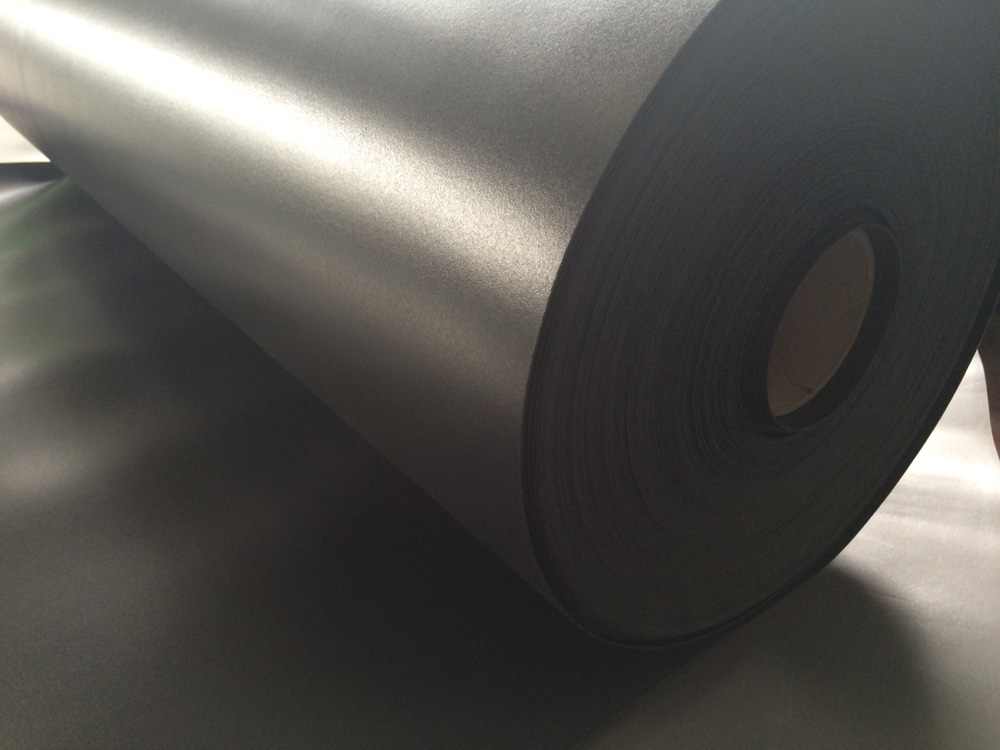
Conductive Foam Roll(surface resistance 10e3-10e5)
There are two types conductive foam rolls, one is conductive polyethylene foam roll. The other one is conductive sponge with conductive cloth on the surface. Here we mainly talked about the conductive polyethylene foam roll, which help to rapidly release the electrostatic without using the environmental humidity.
Conductive Foam Roll Properties
- Conductive foam roll surface resistance 10e3-10e5
- Density 5-6.25lb/ft
- Permanently conductive; will not lose electrical properties – can be used in applications where permanent ESD properties are required
- Improved packaging against shock and vibration
- Provides protection from physical shock during handling, packaging, shipping, and storage of ESD sensitive devices
- Durable, resilient, attractive and light weight
- Chemical resistance: resistant to organic solvents, acids, bases, etc.;
- Non-contaminating, non-corrosive, and non-sloughing
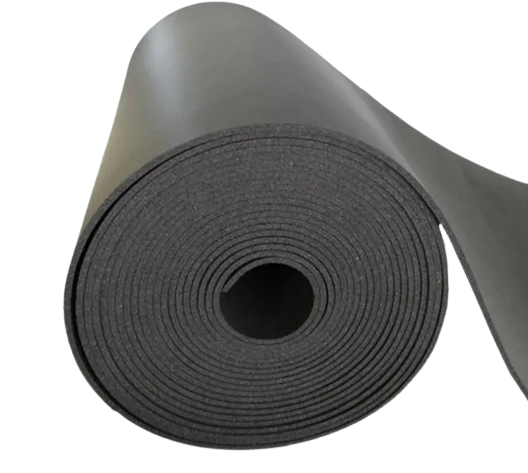
Conductive Foam Roll Usage Consideration
- Better value for long term applications
- Not recommended in applications where Static Dissipative properties are required
Above foam roll both made of the same material (polyethylene), they have very distinct differences. Which one you use will depend on the application of the foam, how long you intend to use the foam, and even cost considerations.
Learn more about all ESD Foam options. Click Here.

